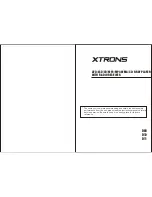
103
PBX Networking
PBX Networking
connections on external S
0
ports or
on the S
2M
port.
Example of a PBX network
Various line types and transmission
protocols can be used for point-to-
point connections. The required net-
work topology (distance, connec-
tion capacity) determines which
type of point-to-point connection is
most suitable.
Protocol: Q.SIG or DSS1
The Q.SIG protocol, designed for
ISDN point-to-point connections, is
the preferable choice as the trans-
mission protocol; alternatively, the
DSS1 protocol, designed for ISDN
dial-up connections in the Euro-
ISDN, can be used. Certain PBX net-
working features can only be used
with the Q.SIG protocol, however. In
particular, the identifier indicating
whether a call is internal or external
cannot be transmitted using DSS1.
Both protocols implement commu-
nication on several protocol layers:
■
L1: Layer 1 defines the physical
line properties and the electri-
cal coding of signals.
■
L2: Layer 2 enables communica-
tion via individual error-pro-
tected channels that are inde-
pendent of each other.
■
L3: Layer 3 defines the adminis-
tration of the individual chan-
nels and implements the fea-
tures designed for ISDN.
Master/Slave
For an ISDN connection, it is possible
to determine which PBX is the proto-
col master and which the protocol
slave. This relationship can be deter-
mined for all three protocol layers in-
dependently of one another.
For each protocol layer, the PBX at
the other end always has to be suita-
bly configured. If one PBX is the pro-
tocol master for a layer, the other
PBX must be the protocol slave for
this same layer. Normally all three
protocol layers are configured iden-
tically. In the case of a trunk line, the
network operator is the protocol
master for all three layers.
Note:
In the case of an S
2M
line, it is
also possible to determine for each
useful channel which end can admin-
ister a channel (master = internally
seized or slave = externally seized).
On S
0
lines this setting is determined
by “L3 master” for both B-channels.
L1 Clock
To enable PBXs in the ISDN network
to communicate with each other,
they must be “clock-aligned”. The L1
Point-to-point
connection
Trunk line
PBX
PBX
PBX
PBX
PBX
Summary of Contents for OpenCom 510
Page 1: ...OpenCom510 Mounting and Commissioning User Guide ...
Page 160: ...158 Index Notes ...
Page 161: ...159 Index Notes ...
Page 162: ...160 Index Notes ...
Page 163: ......















































